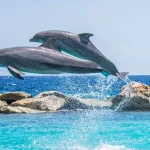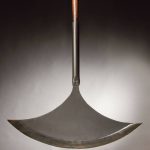Over 70 years ago a parasite is considered to have contributed to the mass extinction of the seashells (especially oysters) in the Delaware Bay on the United States East Coast, and these days the same parasite is blamed for the extensive damage done to the noble pen shell population in the Mediterranean.
Haplosporidium nelsoni (formerly Minchinia nelsoni), or MSX, which was determined by scientists to be the cause of the mass mortalities in the Delaware Bay in the fifties and sixties was recently discovered in the Mediterranean. The first sighting of the parasite was by the Spanish coast in 2016, and by now it is considered that the noble pen shell is facing extinction in Spain.
The parasite didn’t stop there and has since spread throughout the Mediterranean, affecting seashell populations from France to Turkey. Climate change and rising sea temperatures seem to be making the bad situation worse. It is not quite clear yet how the parasite made its way to the Mediterranean, but it’s almost certainly happened because of the human actions. The sea temperatures in the regions highly infected by the parasite are much, much higher in the last several years than they were in the past (13 or 14 °C are considered to be average temperatures, and recently as high as 20 degrees were measured at 40 meters deep).
The noble pen shell is truly one of the symbols of Mediterranean sea, and is often considered to be the sign of the underwater health. It’s the world’s second largest seashell, usually 30–50 cm long, but the largest specimens were found at 120 cm long. It lives just off-shore, and you can see it at a depth of half a meter, up to 60 meters deep. It can live up to 45 years.
Currently, the French population is getting hit hard by the parasite, as are some of the areas off Italian, Turkish, Greek and Cypriot coasts. The parasite has not yet been found in the Adriatic sea, but the population of the noble pen shell in the Croatian part of the Adriatic has been on the steep decline, because of the extensive removal from the bottom in the past, and it’s currently against the law to remove them from the bottom if you come across any.
There aren’t many strategies to fight the infection of the shells in the Croatian Adriatic, considering the fact that the sea temperature is steadily on the rise here as well, and the experts warn that it’s just the matter of time before the parasite finds its way into Adriatic. And, the fate of the noble pen shell is often seen as the warning of a sort for the general health of the seabed itself. So, if you ever come across a noble pen shell while diving or snorkelling in Croatia, consider yourself very lucky, and just say a prayer that they will be there in the future.










